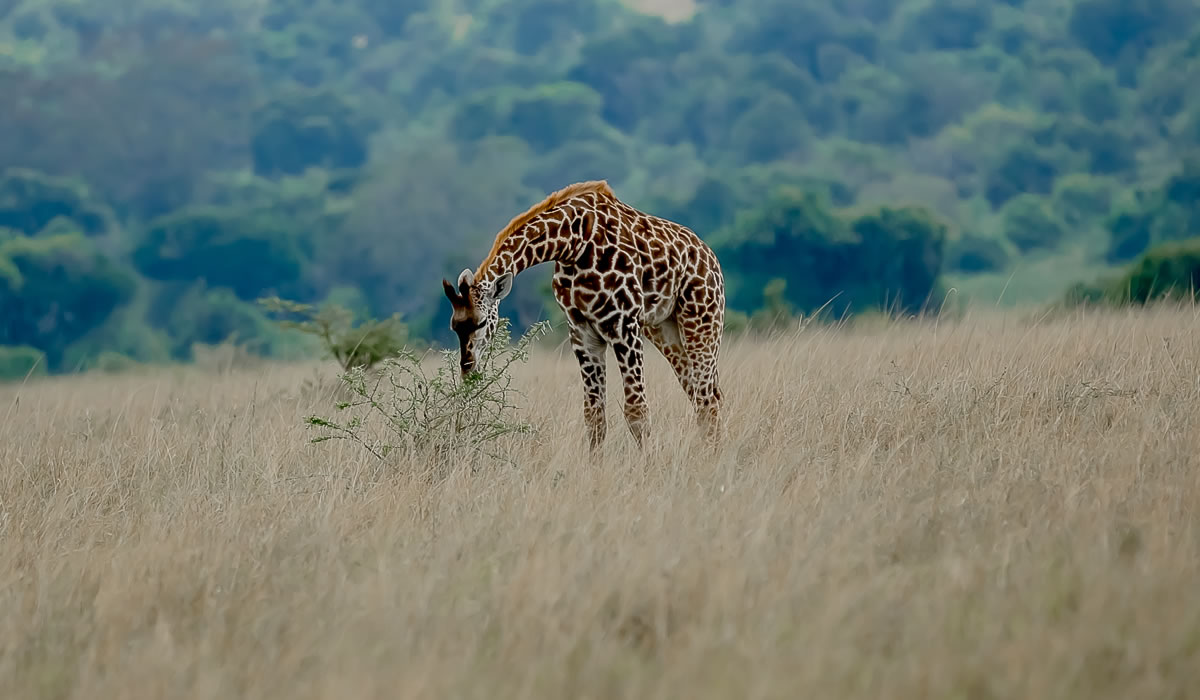Akagera National Park is one of Rwanda’s greatest natural treasures and a top destination for wildlife enthusiasts, bird watchers, and adventure travelers. Located in the eastern part of the country along the border with Tanzania, Akagera is the only savannah national park in Rwanda and offers a very different experience from the lush rainforests of Volcanoes and Nyungwe. Covering about 1,122 square kilometers, the park combines sweeping savannah plains, rolling hills, woodlands, swamps, and a network of lakes that create one of the most scenic landscapes in East Africa. For travelers looking to enjoy the classic safari experience in Rwanda, complete with the Big Five, Akagera National Park is an unmissable destination.

Established in 1934, Akagera was named after the Kagera River, which flows along the park’s eastern boundary and feeds into a series of lakes and wetlands. These water systems form one of the largest protected wetlands in central Africa, supporting an abundance of wildlife and bird species. Over the years, Akagera faced significant challenges, particularly after the 1994 genocide, when much of the land was encroached upon for farming and poaching became widespread. However, in 2010 the Rwanda Development Board partnered with African Parks, a non-profit conservation organization, to restore and manage the park. This collaboration has transformed Akagera into a conservation success story, with thriving wildlife populations and an expanding tourism sector that directly benefits local communities.
One of the major highlights of Akagera National Park is its growing population of large mammals. The park is home to the Big Five, which include lions, leopards, elephants, rhinos, and buffaloes. Lions were reintroduced in 2015 after being absent for nearly two decades, and since then their population has been steadily increasing. Black rhinos were also reintroduced in 2017, followed by white rhinos in 2021, making Akagera one of the few places in East Africa where travelers can see both species of rhino. Elephants roam the park’s savannah and woodlands, often seen in herds around lakes and rivers. Buffaloes are also common, frequently spotted grazing on open plains or cooling off near water.
Beyond the Big Five, Akagera hosts an impressive variety of other wildlife. Visitors can expect to see giraffes gracefully striding across the savannah, zebras grazing in herds, and hippos wallowing in the lakes. Antelope species are abundant, with impala, bushbuck, topi, and waterbuck among the most commonly seen. More elusive species include roan antelope and sable antelope, both rare and highly sought after by wildlife enthusiasts. Warthogs, baboons, and vervet monkeys also add to the diversity of sightings. With patience and luck, predators such as spotted hyenas, leopards, and side-striped jackals may also make an appearance during game drives.
Birdwatching is another major attraction in Akagera, with more than 500 species recorded in the park. Its mix of savannah, wetland, and woodland habitats provides a haven for a wide range of species, making it a paradise for ornithologists. Iconic birds include the shoebill stork, African fish eagle, grey crowned crane, papyrus gonolek, and open-billed stork. The lakes and wetlands are particularly rewarding areas, where flocks of waterbirds gather in large numbers. Birding tours and specialized birding safaris are increasingly popular, and many visitors combine wildlife viewing with birdwatching for a well-rounded safari experience.
One of the most unique aspects of Akagera National Park is its scenic landscape. Unlike the dense forests of western Rwanda, Akagera’s rolling savannahs, dotted with acacia trees and interspersed with lakes, evoke the classic imagery of an African safari. The series of lakes, including Lake Ihema, Lake Rwanyakizinga, and Lake Gishanju, form the park’s lifeblood. Lake Ihema, the largest, is particularly famous for its boat safaris, which provide close encounters with hippos, crocodiles, and abundant birdlife. A boat excursion on Lake Ihema is a highlight for many visitors, offering a peaceful yet thrilling way to experience the park’s biodiversity from the water.
Game drives are the main activity in Akagera and can be done in the northern or southern parts of the park. The southern entrance near Kayonza serves as the main entry point, while the northern sector offers more open savannah landscapes and higher chances of spotting predators. Full-day game drives allow visitors to cover large sections of the park, while half-day drives are ideal for those with limited time. The diversity of habitats means that no two game drives are ever the same, and sightings vary depending on the season, time of day, and luck. Early morning and late afternoon drives are particularly rewarding, as wildlife is more active during cooler hours.
For a more intimate experience, Akagera also offers night game drives, which provide opportunities to spot nocturnal species such as bush babies, genets, civets, and occasionally leopards or hyenas on the prowl. These drives are guided by experienced rangers who use spotlights to reveal the hidden nightlife of the savannah. Walking safaris and behind-the-scenes conservation tours are also available, offering a chance to learn more about the park’s anti-poaching efforts, tracking techniques, and ecological management strategies.
Akagera is not only about wildlife but also about cultural and community experiences. The park works closely with local communities to promote conservation and sustainable tourism. Visitors can engage in cultural tours, including visits to nearby villages where they can learn about traditional cattle-keeping, banana beer brewing, and Rwandan crafts. These experiences provide valuable insight into the lives of the people who live near the park and highlight the balance between conservation and livelihoods.
Accommodation in and around Akagera National Park caters to a wide range of travelers, from luxury to budget. High-end lodges such as Magashi Camp, run by Wilderness Safaris, offer exclusive experiences with luxury tents overlooking Lake Rwanyakizinga, personalized service, and exceptional guiding. Mid-range options like Ruzizi Tented Lodge provide a comfortable and eco-friendly stay, with beautifully designed tents along Lake Ihema and a strong focus on sustainability. Budget travelers can stay at Akagera Game Lodge, which offers affordable rooms and easy access to the park’s southern entrance. Campsites are also available for adventurous travelers who wish to immerse themselves in the wild.
Accessibility to Akagera is relatively easy compared to many African parks. It is located about two and a half hours’ drive from Kigali, making it possible to visit as a day trip, although staying at least two or three nights is recommended to fully enjoy the park. Many travelers choose to combine Akagera with other Rwandan attractions, such as gorilla trekking in Volcanoes National Park or cultural tours in Kigali, to create a diverse and enriching itinerary.
When planning a visit to Akagera, it is important to consider the seasons. The dry seasons, which run from June to September and December to February, are ideal for game viewing, as animals tend to gather around water sources and vegetation is less dense. The wet seasons, from March to May and October to November, bring lush green landscapes, vibrant bird activity, and dramatic skies, although some areas of the park may be harder to access. Both seasons offer unique advantages, and Akagera can be enjoyed year-round.
Conservation is at the heart of Akagera’s success story. With strong protection measures, community involvement, and international partnerships, the park has seen a resurgence in wildlife populations and has become a model for conservation in Africa. Revenue from tourism supports local communities and park management, creating a cycle where both people and nature benefit. Visitors play a direct role in this process, as every safari contributes to the park’s continued success.
Akagera National Park is a must-visit destination for travelers looking to experience Rwanda’s wild side. With its Big Five safaris, diverse landscapes, abundant birdlife, and immersive cultural encounters, the park offers a well-rounded and unforgettable adventure. Its accessibility from Kigali, wide range of accommodations, and year-round appeal make it a perfect addition to any Rwandan itinerary. Whether gliding along Lake Ihema on a boat safari, spotting lions on a game drive, or watching the sunset over the savannah, Akagera delivers the quintessential African safari experience in a uniquely Rwandan setting.
For those planning a journey to Rwanda, Akagera National Park is more than just a wildlife reserve, it is a living symbol of conservation success, a sanctuary for biodiversity, and a place where adventure and serenity meet. It is a destination that promises not only thrilling wildlife encounters but also meaningful contributions to the protection of Africa’s natural heritage.

